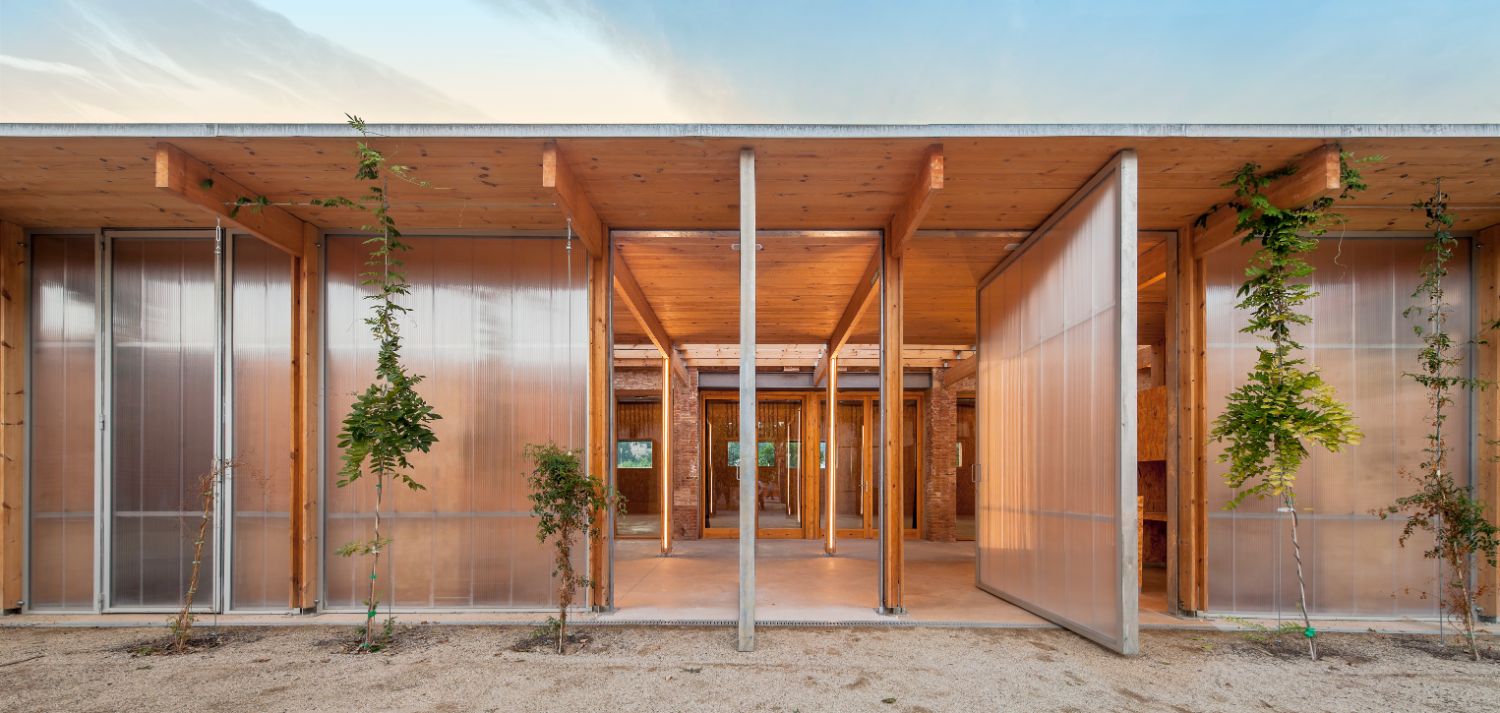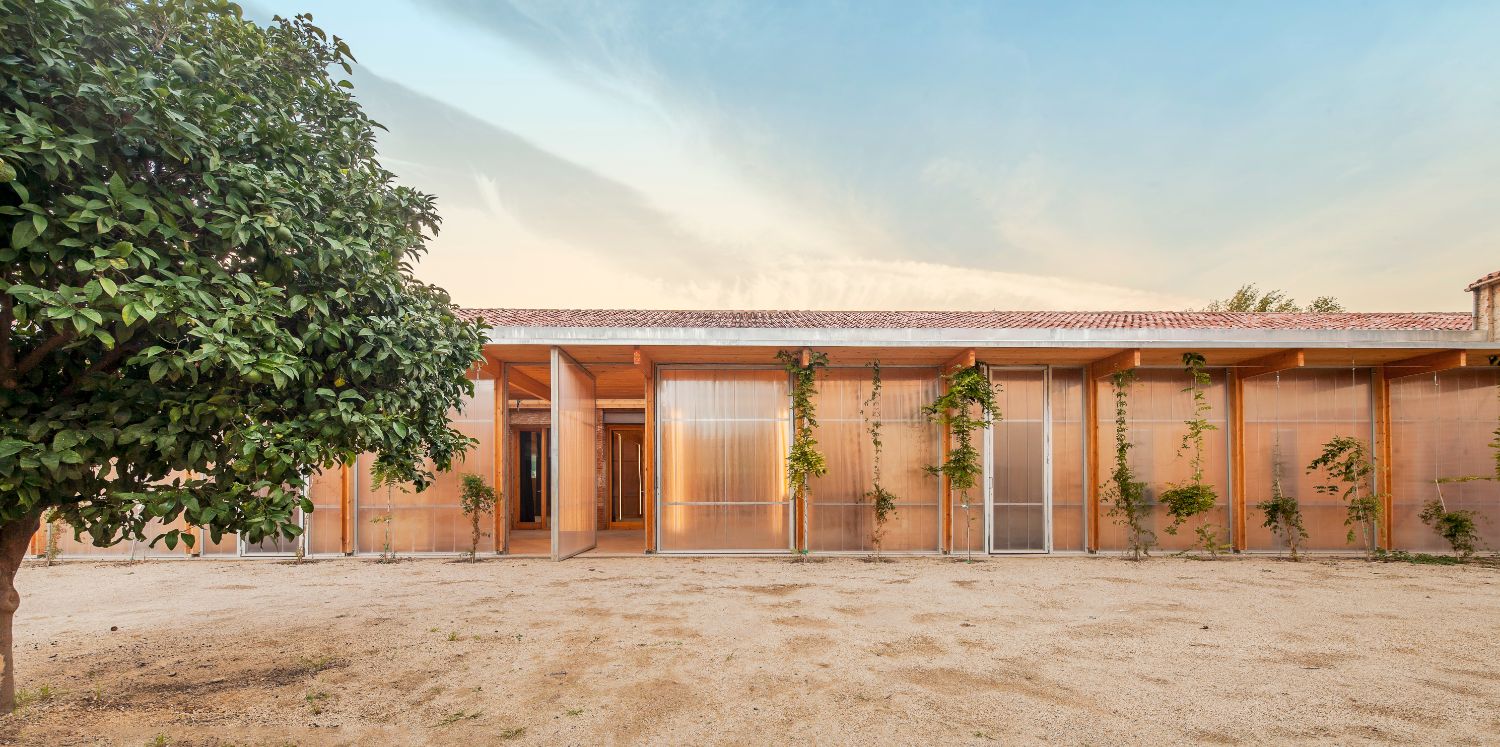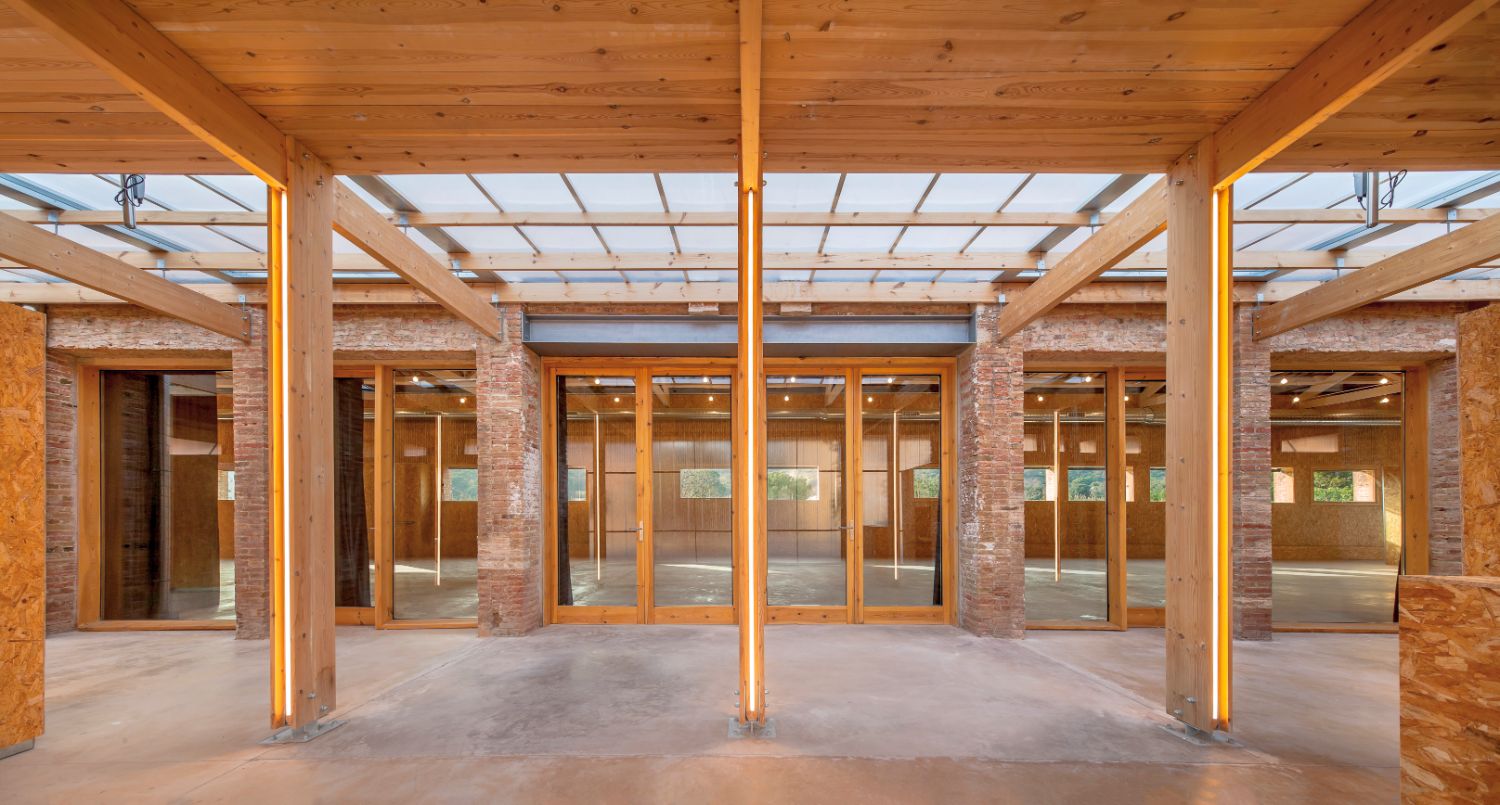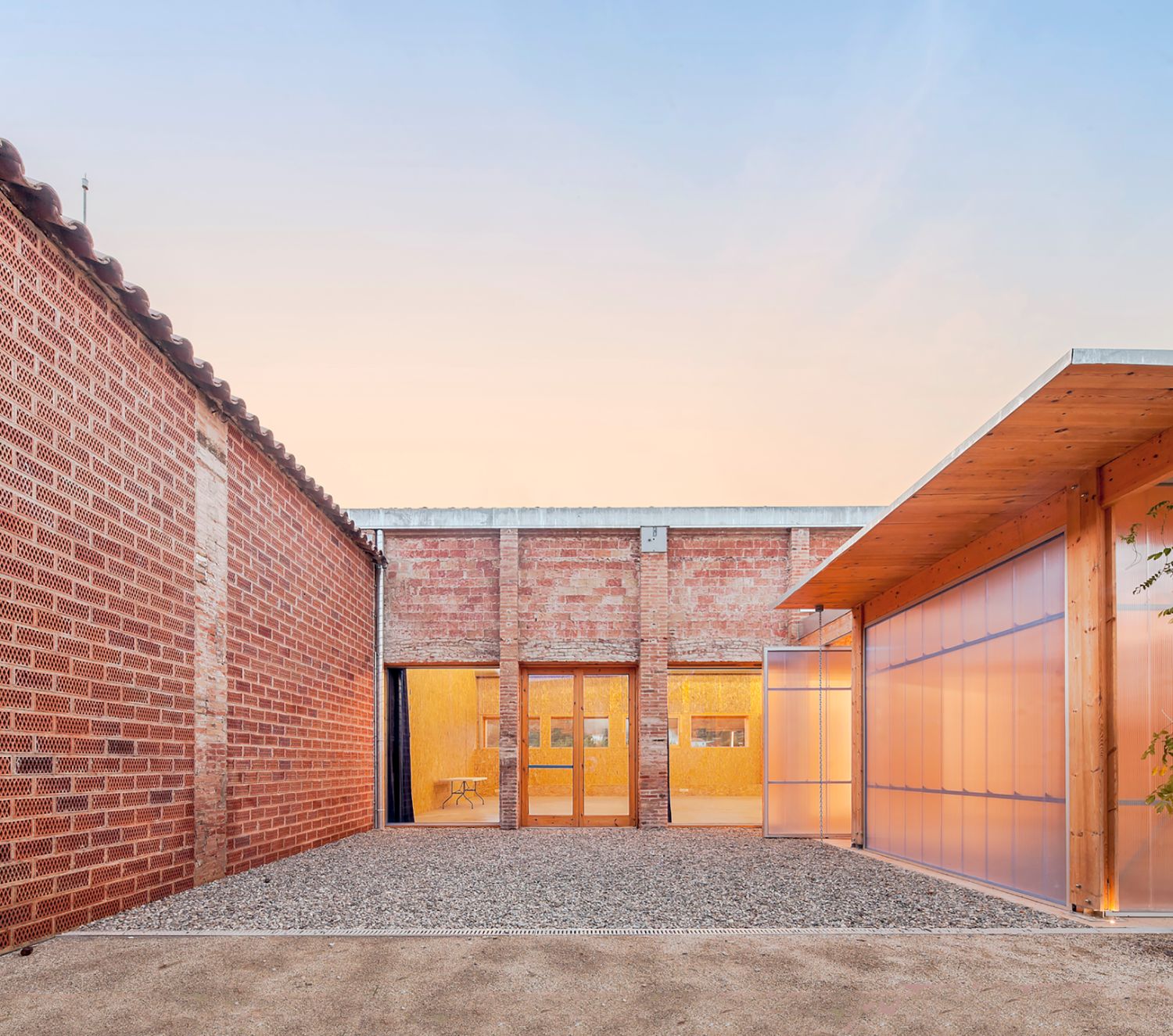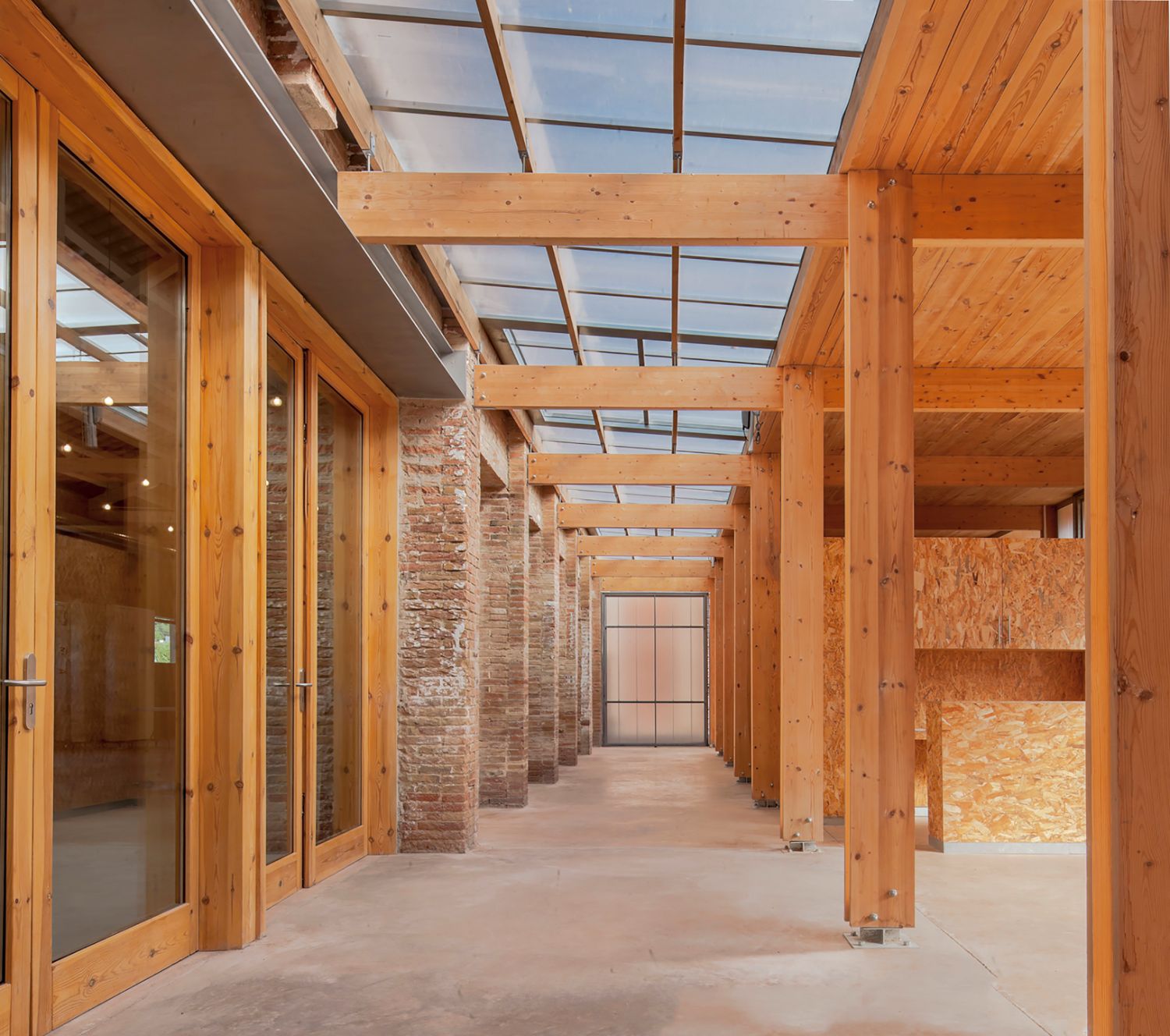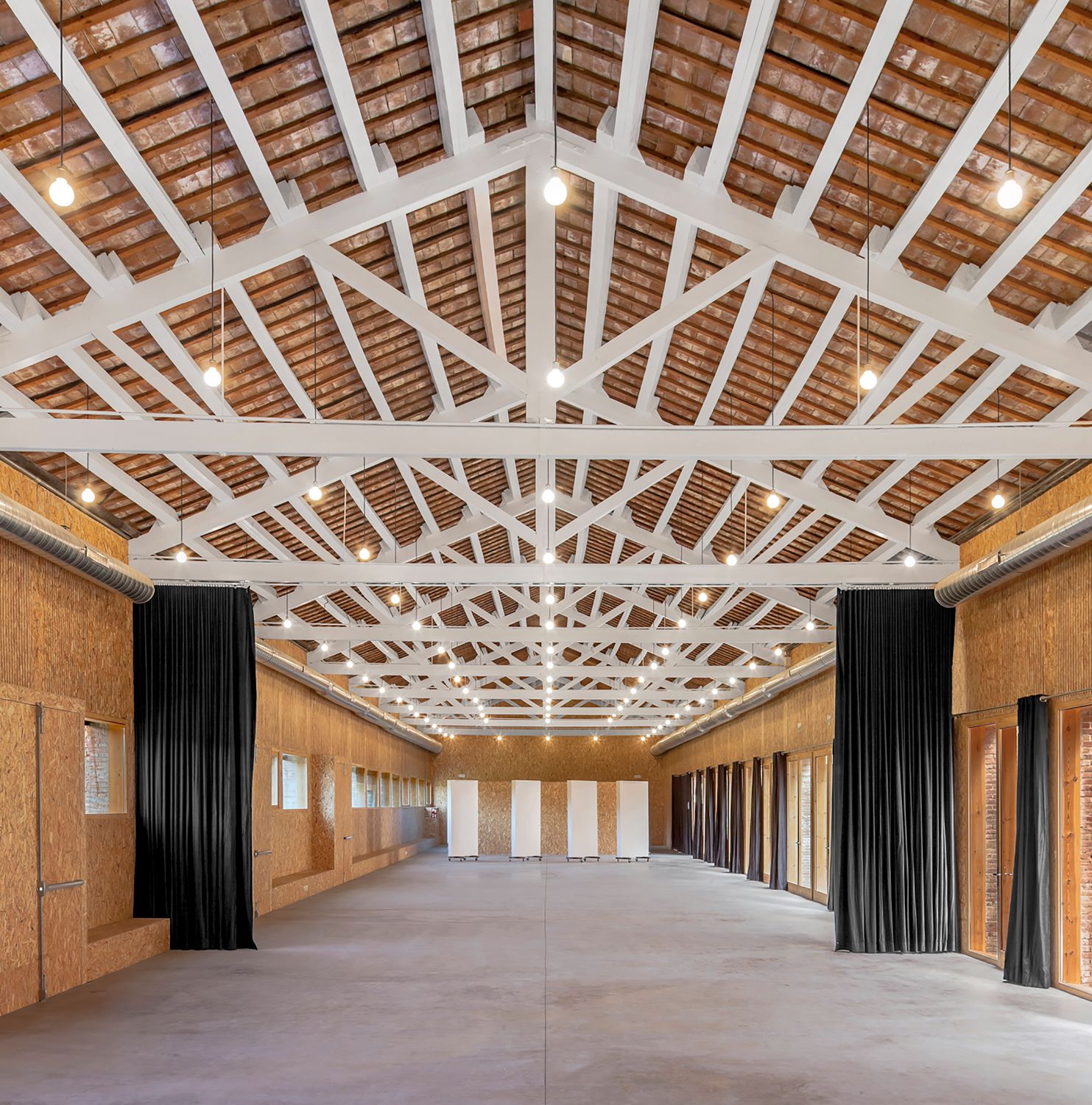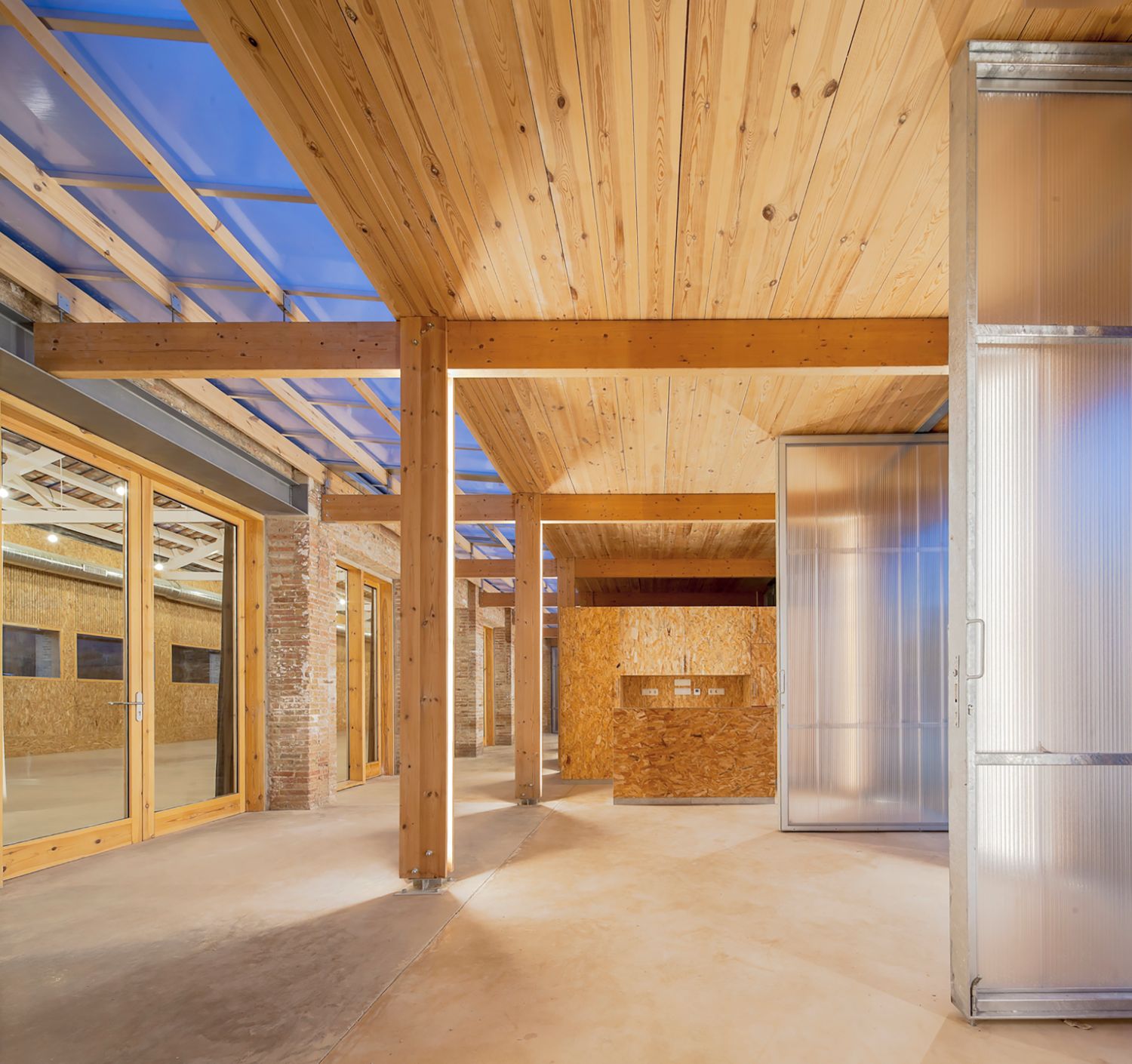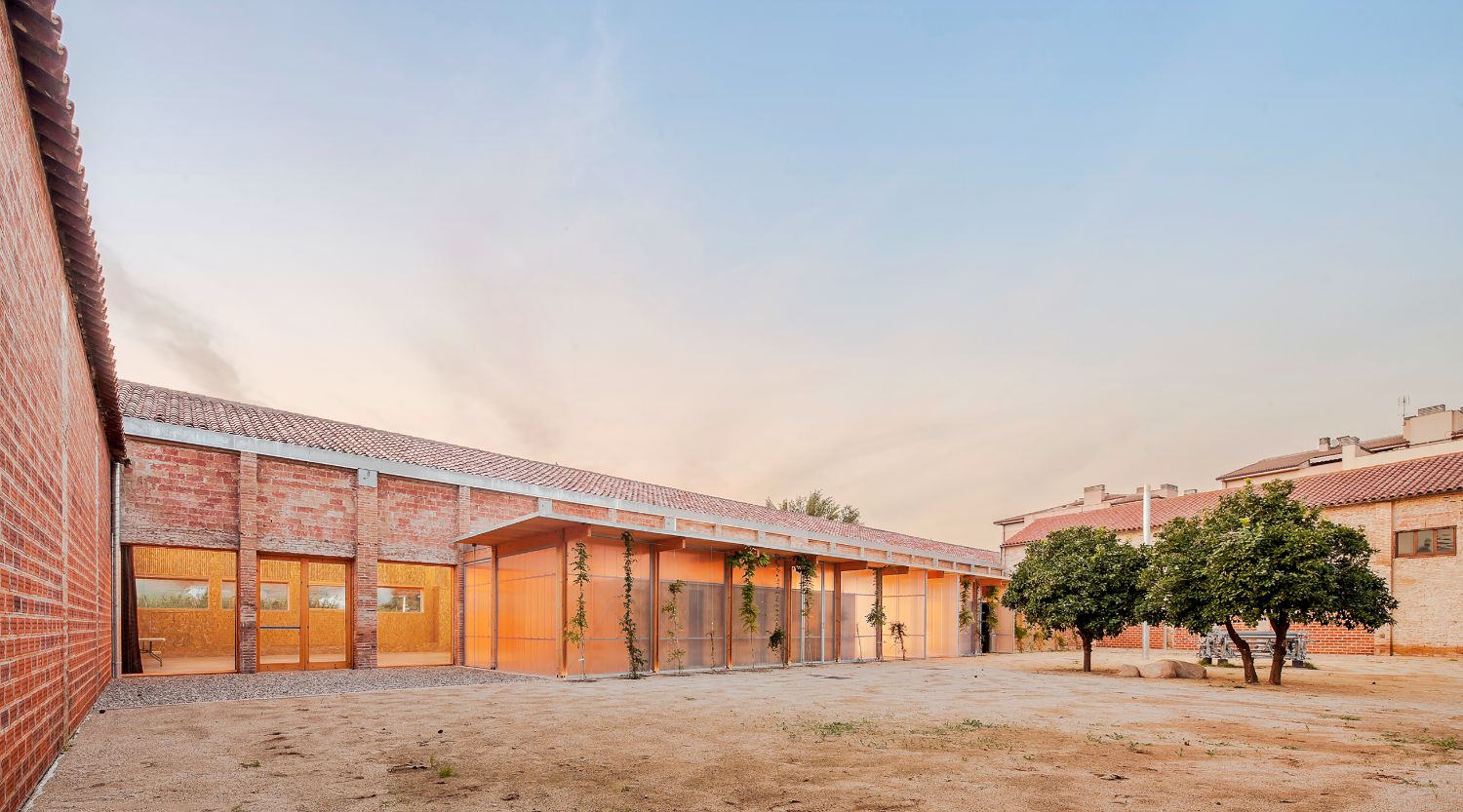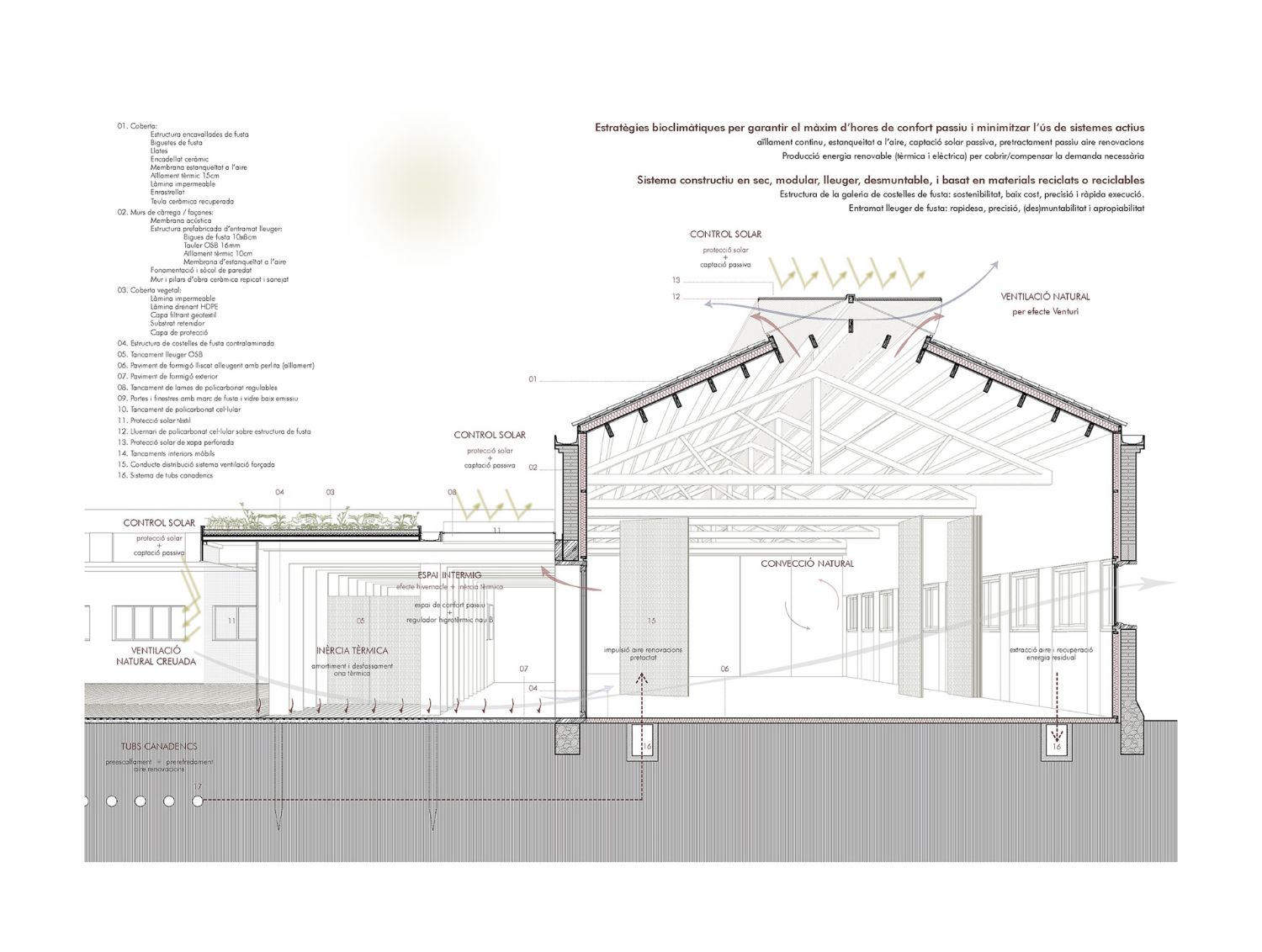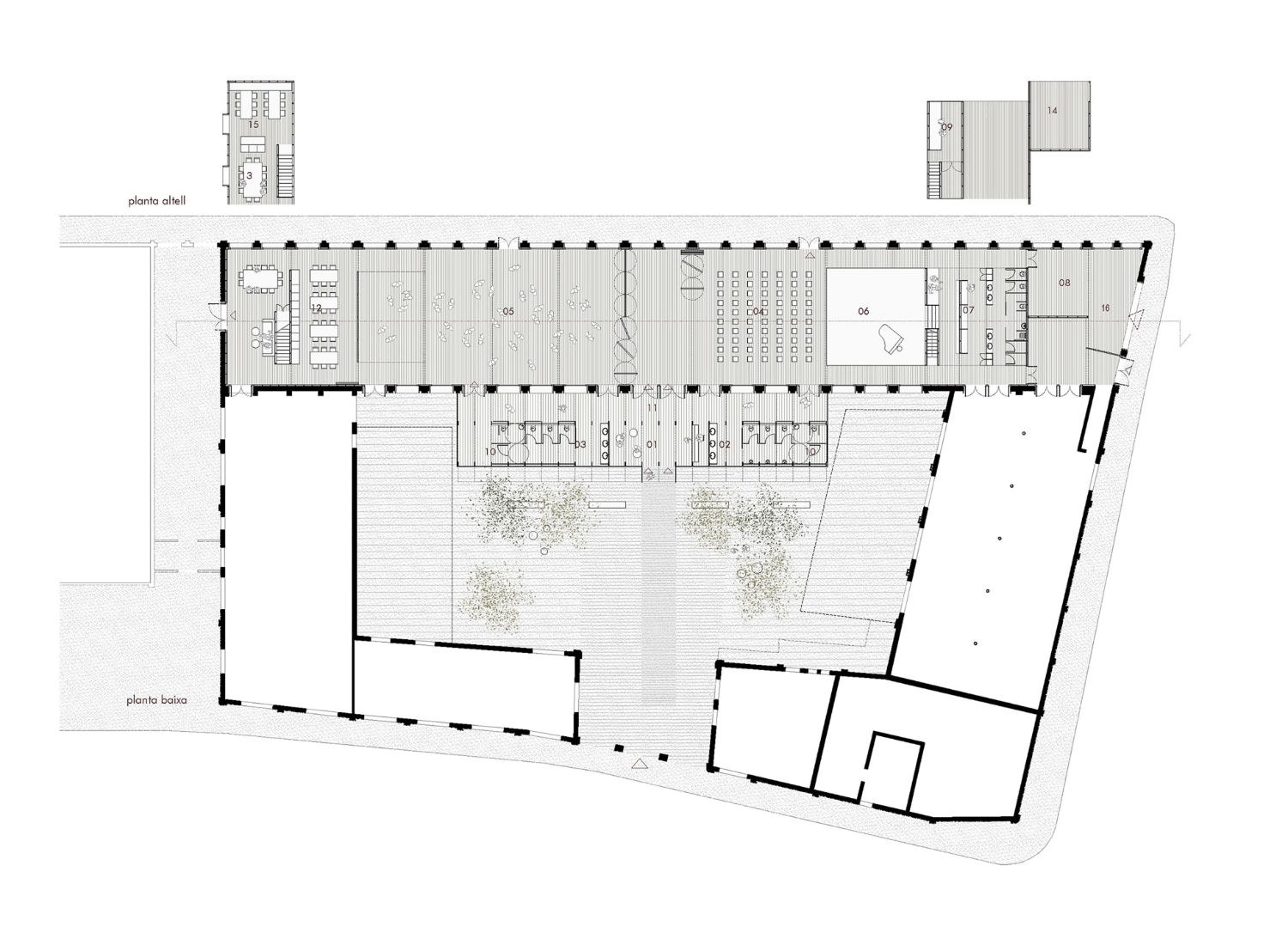Can Luna Transformation/
Nil Brullet Francí
Maria Morillo Sedó
Project Details

Location(City/Country):
La Garriga, Barcelona. / Spain
Tipology:
Cultural
Year (Design/Construction):
- / 2018
Area (Net/Gross):
- / 917.9 m2
Operational Carbon emissions (B6) kgCO2e/m2/y:
-
Embodied Carbon emissions (A1-A3) kgCO2e/m2:
-- A series of bioclimatic strategies are determined to ensure maximum hours of passive comfort and minimise the use of active systems with continuous insulation, air tightness, passive solar gain and passive pre-treatment with air renewals.
- Renewable energy is producted (thermal and electrical) to cover/compensate for the necessary demand.
- The construction system is dry, modular, lightweight, demountable and based on recycled or recyclable materials with a gallery structure of timber chops to ensure sustainability, low cost, precision and fast execution.
- A lightweight timber frame allows for fast construction, precise ¨dis-assemble¨ ability and appropriateness.
Project description as provided by the Architects:
The Can Luna industrial complex is located in the northwest of La Garriga, adjacent to the Congost river (which delimits the urban fabric) and in a key position for the urban development of the municipality.
The city council plans to transform the entire complex, consisting of three large warehouses, into a new socio-cultural space. The transformation will be carried out in 3 phases, of which, for the moment, only the first one (the one corresponding to the central nave) has been completed, where a multi-purpose space is to be developed, a large space in the nave to carry out all kinds of activities with their corresponding services. The project has taken into account the renovation of the whole complex.
The first proposed action is the emptying of the central courtyard of Can Luna (with the consequent demolition of the annexed volumes) in such a way that it recovers its original appearance, takes on an urban dimension and recovers a fairly large relationship space from which to access the warehouses.
The demolition of the annexed volumes allows the realisation of one of the strong ideas of the project: the construction of a new access gallery that serves as an organiser of the circulations, allows flexible access, and operates as a climate manager. That is, as a hygro-thermal and light regulator: in winter it closes its openings and captures radiation, in summer these open to ventilate the skylights, and the vegetation and the overhang protect the facade from radiation. The construction of the gallery is compatible with the phased implementation requested by the city council. In the first phase, which has already been built, the part in front of the refurbished building has been executed. In successive phases, the gallery will be completed as the rest of the buildings are rehabilitated.
The rehabilitation of Hall B itself seeks to enhance its architecture and adapt the space to the new functional requirements. The first point to be tackled was to try to preserve the most characteristic element of the building, its ceramic roof with the powerful wooden trusses that organise the interior space, for which it was necessary to reinforce both trusses and purlins.
Following this, the window sills were demolished, achieving two essential effects: to generate much wider openings that allow better sunlight inside and to create multiple accesses to the interior of the building. At the same time, the windows of the facade were restored, projecting the views to the exterior. This double intervention allows, while maintaining the prototypical morphology of walls and openings of industrial buildings, to achieve a great visual permeability that crosses the building connecting the Can Luna courtyard, the access gallery, the interior of the building and the green space of the Congost river.
Full project team credits: Nil Brullet, Mario García, Lluís Mateos, Maria Morillo
Photographer: Andres Flajszer
